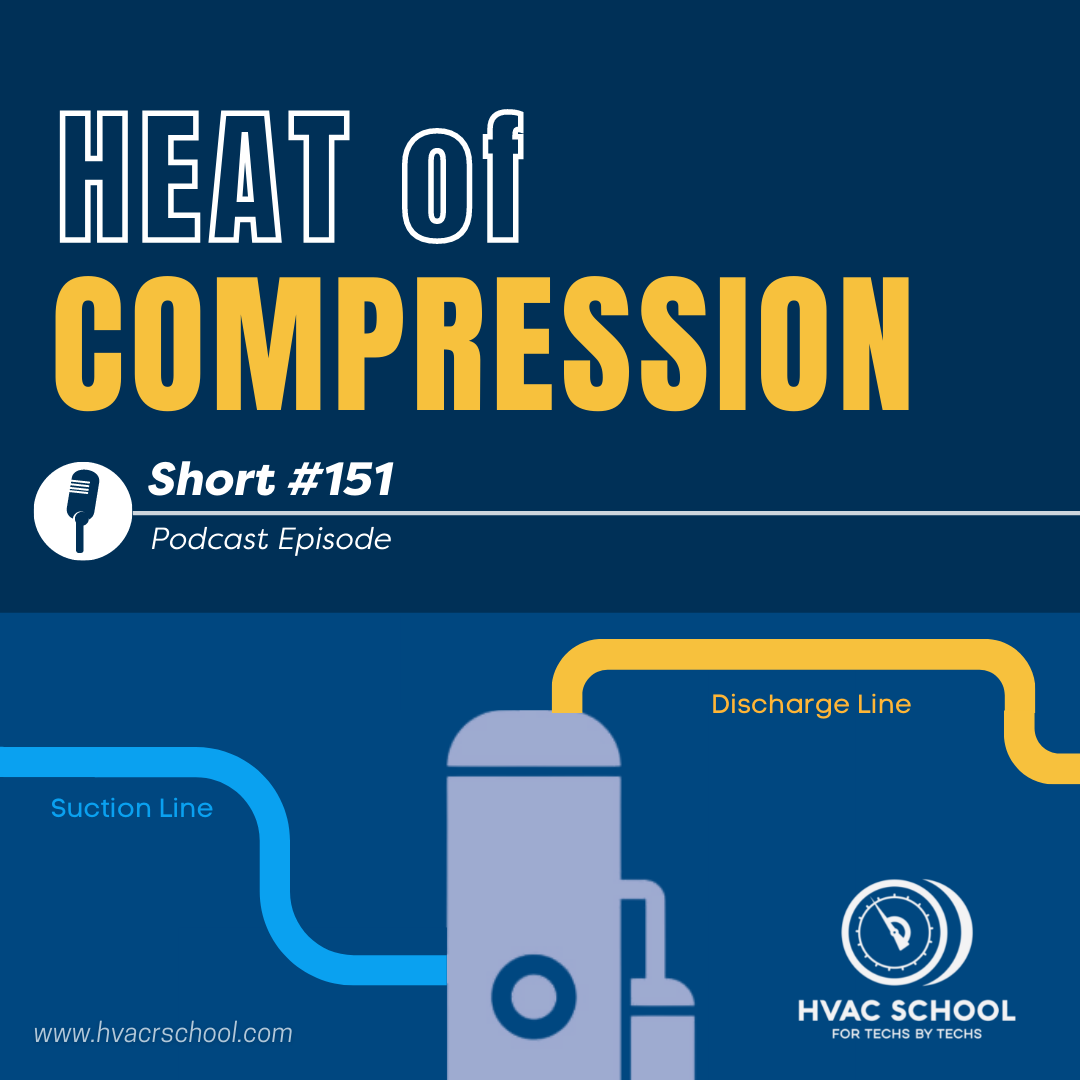Heat of Compression – Short #151

In this short podcast, Bryan explains what the heat of compression is and why we should care about it as HVAC/R professionals.
More heat is rejected in the condenser than absorbed in the evaporator coil, and that’s because the compressor adds heat. That added heat is called “heat of compression.” That heat does NOT contribute to the net refrigeration effect (NRE), as it doesn’t contribute to cooling.
When we compress something, we increase the system entropy during that process. Entropy is the waste and disorder associated with work. There is some inefficiency, which we see in the form of additional heat. So, the HVAC system needs to reject that additional heat of compression, and we can plot and track reversible changes by following lines of constant entropy.
As the temperature increases, the molecules begin moving more quickly. However, the refrigerant doesn’t absorb many more BTUs in the compressor (in a properly operating system). The temperature spikes, but the compressor doesn’t typically add a significant number of BTUs to the refrigerant.
Heat also enters the system via the suction line, which also doesn’t contribute to the NRE. Long, uninsulated suction lines can absorb a lot of heat without cooling the space at all. That heat also has to be rejected in the condenser. So, short, well-insulated suction lines tend to absorb less heat.
When plotting the heat of compression, we’re looking at BTUs added into the system in the compressor, discharge line, and suction line. BTUs that don’t contribute to the NRE may fall under the “heat of compression” label, though the actual definition may vary by organization.
Check out Eugene Silberstein’s book, Pressure Enthalpy Without Tears, at https://escogroup.org/shop/itemdetail.aspx?ID=1445.
If you have an iPhone, subscribe to the podcast HERE, and if you have an Android phone, subscribe HERE.
Check out our handy calculators HERE.
Author:









Comments
To leave a comment, you need to log in.
Log In